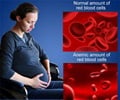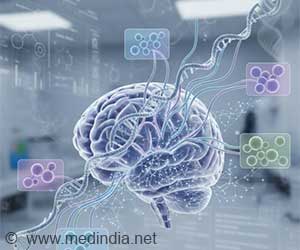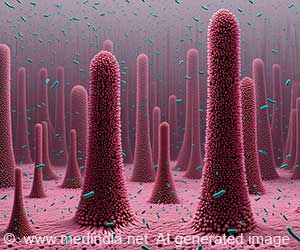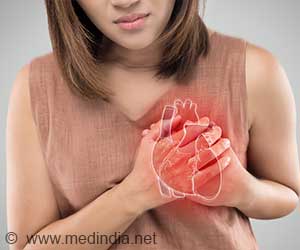Anaemia among Indian children and women is a cause of concern. More than half of women and children were found to be anaemic in the fifth national family health survey.
- More than 67 percent of children aged 6 months to 5 years were anaemic as reported by NFHS-5 survey
- In comparison to NFHS-4, more women and men in the age groups of 15 to 49 were anaemic
- Anaemia cases were substantially more prevalent among women (57%) than men (25%)
TOP INSIGHT
Despite a significant increase in the composition of iron folic acid pills taken by pregnant women for 180 days or longer, anaemia in children and mothers remains a worry.
Read More..
Anemia and its Causes
Haemoglobin in the blood provides oxygen to the body's tissues. Anaemia is a disorder in which there are not enough red blood cells or not enough haemoglobin in the blood cells, which reduces the ability of the blood to deliver oxygen throughout the body. The result is symptoms like weakness, lightheadedness, exhaustion, fatigue and shortness of breath. The ideal blood level of haemoglobin depends on a person's age, gender, altitude where they live, pregnancy, and habits like smoking. Nutritional deficiencies, such as those in iron, vitamin B12, vitamin A, and folates, infectious diseases like malaria, tuberculosis, and HIV, acquired disorders, and parasite infections are the most frequent causes of the condition (1✔ ✔Trusted SourceConditions and treatments of Anaemia
Go to source).
According to the World Health Organization (WHO), the percentage of women in the said age group with a haemoglobin concentration less than 12 grams per decilitre (g/dL) for non-pregnant and lactating women, and less than 11 g/dL for pregnant women, after adjusting for altitude and Smoking, indicates the prevalence of Anaemia.
The prevalence in children (aged 6 to 59 months) is estimated as the percentage of children in the aforementioned age range with a haemoglobin concentration less than 11 g/dL, adjusted for altitude.
Prevalence of Anaemia in India Recorded by NFHS-5
The fifth NFH survey included 6.1 lakh nationwide sampling of households. The survey's sample size varied from state to state due to variations in population size and age distribution.By taking blood samples from all men (15 to 54 years) and women (15 to 49 years) who willingly volunteered to the testing, the representative survey tracked the prevalence of anaemia in men, women, and children. Parents or legal guardian gave permission for youngsters (6 to 59 months) to get treatment.
The survey found that -
- More than 67 percent of kids between the ages of six months and five were anaemic in the most recent NFHS-5 survey, up from 58.6 percent reported by NFHS-4.
- In the age ranges of 15 to 49 and 15 to 19, more women and men were found to be anaemic than in the previous survey.
- Women (15-49 years old) had a much higher incidence of anaemia patients than did men (25% vs. 57%).
- An increase in anemia of 1.8 percentage points has been seen in pregnant women, 3.9 percentage points in all women of reproductive age, and 5 percentage points in teenage girls compared to NFHS-4.
State Wise Distribution of Prevalence of Anaemia
Among the major states, Gujarat has the highest prevalence of anaemia in children aged 6 to 59 months, with approximately 80% of those youngsters having the condition. When compared to the 62.6% registered in NFHS-4, the prevalence in Gujarat increased by 17.1 percentage points.The primary large states with a frequency of more than 70% among children include Madhya Pradesh, Rajasthan, Punjab, Haryana, and Telangana.
The only state with a prevalence under 40% was Kerala (39.4%), although having seen a rise in 3.7 percentage points from NFHS-4. According to NFHS-5, the frequency is lower than the national average in four south Indian states (excluding Telangana) and six north-eastern states (excluding Assam).
The state with the largest increase in anaemia prevalence is Assam, where the prevalence increased by 32.7 percentage points from 35.7% in NFHS-4 to 68.4% in NFHS-5. Additionally, Mizoram and Chhattisgarh also had increases of more than 25 percentage points.
Despite its tiny size, the incidence decreased in only 4 states. These are Uttarakhand (1% decrease), Haryana (1.3% decrease), Jharkhand (2.4% decrease), and Meghalaya (2.9% decrease).
The two states with the highest rates of anaemia among teenage girls were West Bengal and Gujarat. Nearly 97% of Ladakh's teenage girls in the 15 to 19 age range were found to be anaemic. The frequency was highest in West Bengal, the largest state, with 70.8% of the population, up from 62.2% in NFHS-4, and Gujarat, with 69%.
Less than 40% of the population were found anaemic in Mizoram (34.9%), Nagaland (33.9%), Kerala (32.5%), and Manipur (27.9%).
With a frequency of 67%, Assam’s anaemia rate increased from 42.7% during NFHS-4, whereas the incidence decreased in Haryana, Uttar Pradesh, Andhra Pradesh, Tamil Nadu, Sikkim, Delhi, Kerala, and Uttarakhand.
Bihar, one of the larger states, has the greatest frequency of anaemia among pregnant women (63.1%), followed by Gujarat and West Bengal (more than 62% each). More than 60% of the population was present in Odisha and Tripura as well.
West Bengal had the highest prevalence of anaemia, at 71.4%, among all women in the reproductive age (15 to 49 years). A prevalence of 65% and more is present in Gujarat, Jharkhand, and Assam. Kerala (36.3%) and the north-eastern states of Mizoram (34.8%), Manipur (29.4%), and Nagaland (28.9%) have a prevalence of less than 40%, similar to that of adolescent women (3✔ ✔Trusted Source
National Family Health Survey (NFHS-5)
Go to source).
World Health Organizations Estimation of Anemia
WHO estimated that the prevalence of anaemia worldwide in 2019 was 39.8% among children aged 6 to 59 months and 36.5% among pregnant women. 29.9% of the women of reproductive age were anaemic in 2019.According to WHO, it is seen that the prevalence of anaemia in women of reproductive age in India was 53% in 2019, the fifth-highest globally, after Yemen, Mali, Benin, and Nigeria. In the case of children (6 to 59 months), the prevalence in India was 53.4% (2✔ ✔Trusted Source
Anaemia
Go to source).
Global Comparison of India’s Anaemia status
India has the highest anaemia prevalence (39.86%) among the 16 major pharmaceutical markets (16MM), mainly due to lack of proper nutrition and healthcare.Canada has the lowest of 3% whereas The US and 5EU such as France, Germany, Italy, Spain, and the UK have a prevalence level ranging from 5.6–10.74% (4✔ ✔Trusted Source
India has highest prevalence of anemia among 16 major pharma markets, finds GlobalData
Go to source).
Addressing the issue
Iron deficiency is the most frequent cause of anaemia, but there are additional factors that call for medical evaluation and treatment. Measures including increased awareness, better dietary and nutritional choices, education, and IFA supplementation during pregnancy and breastfeeding are needed to hasten the reduction of anaemia.Initiatives by the Government of India
The Centre launched National Nutrition Mission, or POSHAN Abhiyaan in 2018 to reduce Anaemia in India.Anaemia Mukt Bharath is a programme launched by The Ministry of Health & Family Welfare and UNICEF in order to reduce the prevalence of Anaemia in India.
The National Health Mission in 2018 launched Anaemia Mukt Bharath programme, which is a component of the Intensified National Iron Plus Initiative (NIPI) Program. The goal of this programme was to reach the last mile with micronutrient medications like IFA, Calcium, Vitamin A, and Albendazole (5✔ ✔Trusted Source
Anemia Prevalence
Go to source).
References:
- Conditions and treatments of Anaemia - (https://www.betterhealth.vic.gov.au/health/conditionsandtreatments/anaemia)
- Anaemia - (https://www.who.int/health-topics/anaemia#tab=tab_1)
- National Family Health Survey (NFHS-5) - (http://rchiips.org/nfhs/NFHS-5Reports/NFHS-5_India_Report.pdf)
- India has highest prevalence of anemia among 16 major pharma markets, finds GlobalData - (https://www.globaldata.com/media/press-release/india-highest-prevalence-anemia-among-16-major-pharma-markets-finds-globaldata/)
- Anemia Prevalence - (https://anemiamuktbharat.info/)
 MEDINDIA
MEDINDIA


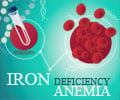


 Email
Email


